The Significance of Plantar Pressure Distribution System for Risk Warning of Diabetic Foot
Diabetic Foot Risk Warning Mechanism
The plantar pressure distribution system monitors plantar pressure changes in diabetic patients in real time through a high-density sensor array (usually 10–16 sensors per square centimeter), with a sampling frequency of up to 1000 Hz.
The system can accurately measure pressure changes of 0.1 N/cm², generating more than 20 biomechanical parameters including pressure peak, contact area, and center of pressure (COP) trajectory, providing objective basis for early warning of diabetic foot.
Core Warning Value
Early high-risk population identification
Identify patients with diabetic peripheral neuropathy through abnormal plantar pressure distribution features (e.g., forefoot pressure ratio > 1.5).
Detect early signs of decreased arch cushioning function (normal arch pressure peak reduced by more than 30%).
Identify local high-pressure areas (>200 kPa) caused by foot deformities (e.g., hammer toes, claw toes).
Ulcer risk prediction
Establish a pressure-time integral model to predict ulcer risk (high-risk threshold > 50 N·s/cm²).
Identify callus formation areas (pressure concentration areas >150 kPa lasting more than 3 seconds).
Monitor dynamic pressure distribution abnormalities caused by gait abnormalities.
Intervention effect evaluation
Evaluate the effect of orthopedic insoles on pressure redistribution (target: reduce pressure in high-pressure areas by more than 30%).
Monitor changes in COP trajectory before and after treatment (normal sway area <5 cm²).
Track pressure improvement during the ulcer healing process.
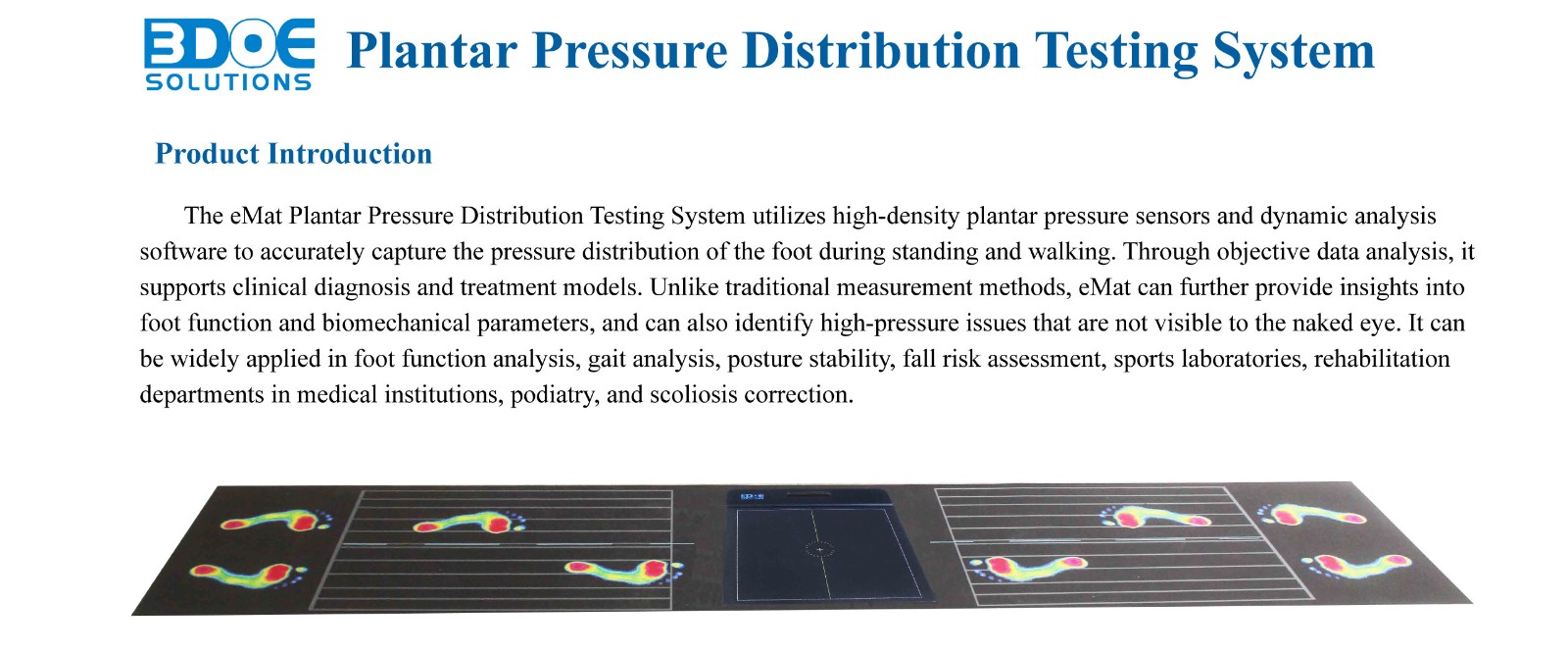
Clinical Application Process
Screening stage:
Static standing pressure test (assess arch support function).
Dynamic gait analysis (evaluate pressure changes during gait cycle).
3D foot shape scanning (customize intervention plan based on pressure data).
Intervention stage:
Custom pressure-relieving insoles (reduce local pressure peak by 40–60%).
Gait training guidance (improve pressure distribution symmetry).
Regular follow-up monitoring (review pressure changes every 3 months).
Warning stage:
Establish personal pressure baseline database.
Set abnormal pressure threshold alarms (e.g., single-point pressure >250 kPa sustained).
Combine blood glucose data to comprehensively evaluate risk level.
Technical Advantages
Accurate quantification: can detect pressure changes of 0.1 N/cm², identifying minor abnormalities.
Dynamic monitoring: supports real-time analysis under multiple movement states such as walking and running.
Visualized reporting: generates pressure heat maps and trajectory maps for intuitive display of abnormal areas.
Intelligent warning: AI algorithms predict ulcer occurrence probability within 6 months (accuracy >85%).
Typical Application Cases
Case 1: Early Screening
A tertiary hospital screened 500 diabetic patients and found that those with abnormal plantar pressure had an ulcer incidence 4.2 times higher than normal patients. Early intervention reduced ulcer incidence by 62%.
Case 2: Orthotic Intervention
After using 3D-printed orthopedic insoles, the patient’s forefoot pressure peak decreased from 280 kPa to 160 kPa, and ulcer recurrence rate decreased by 75%.
Case 3: Long-Term Monitoring
Through 12 months of follow-up, patients with improved pressure abnormalities had an 83% reduction in amputation risk, whereas patients without improvement had a 3.5-fold increase in amputation risk.

 +86-0755-86131192
+86-0755-86131192 2025-09-01
2025-09-01 Back to list
Back to list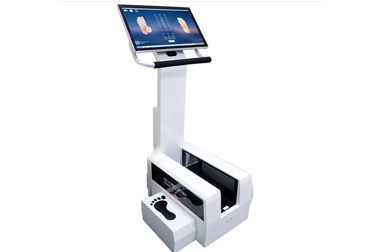
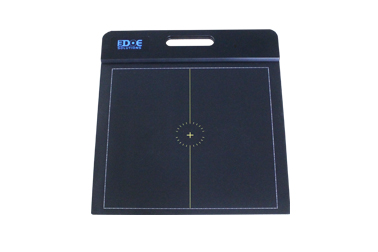

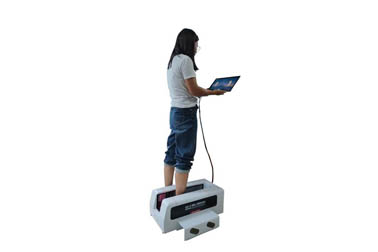
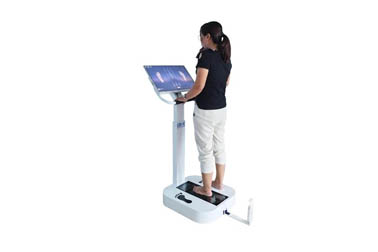




 +86-0755-86131192
+86-0755-86131192